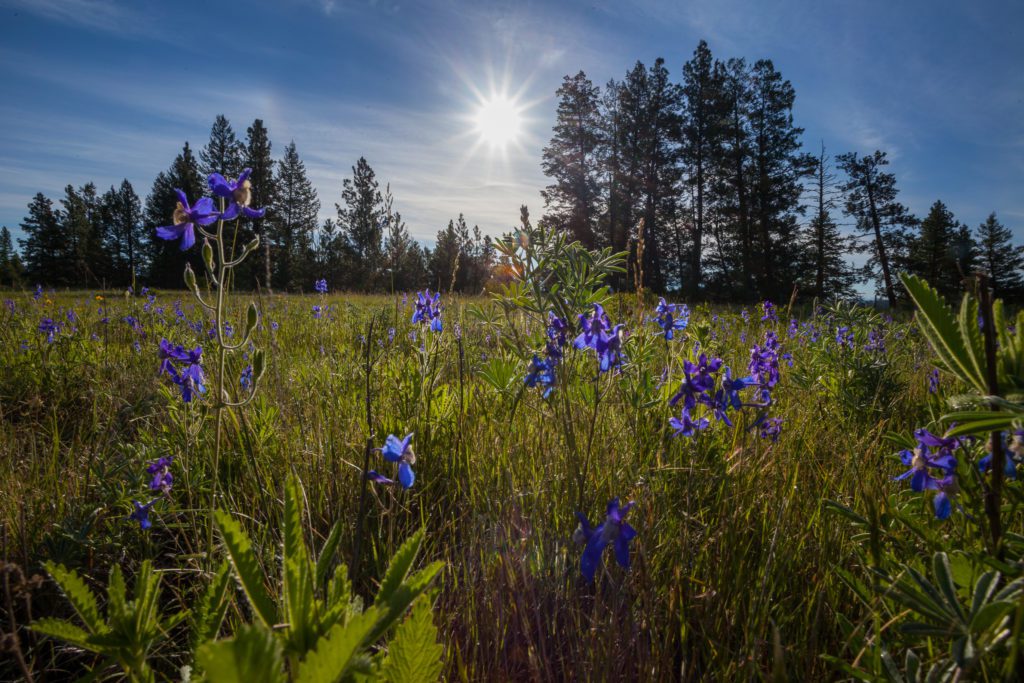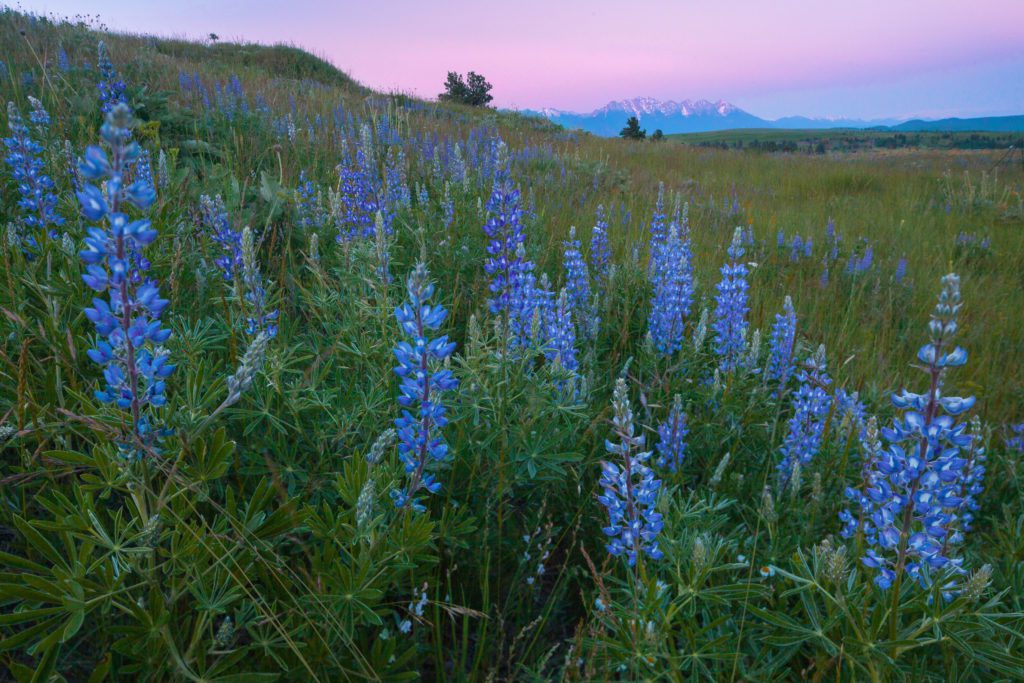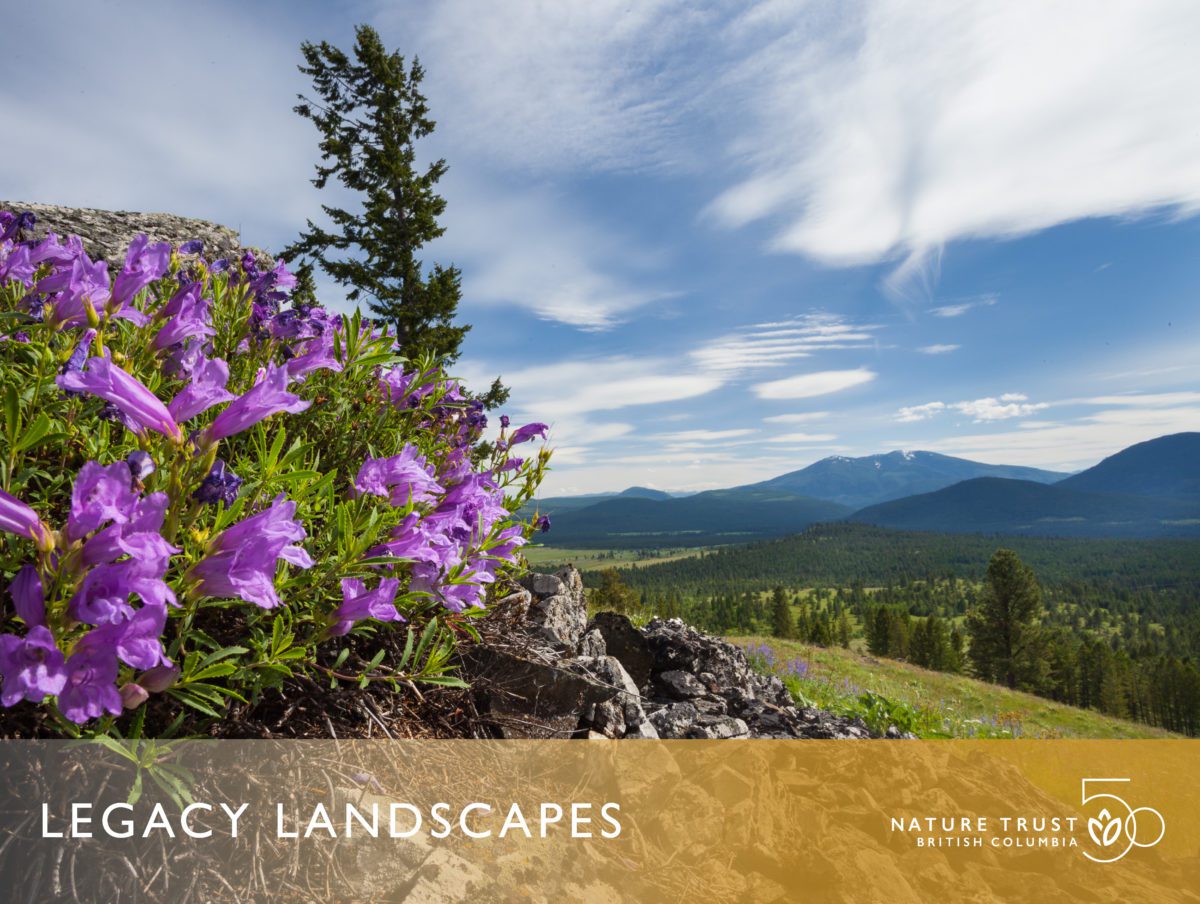
Walk with us through the Wycliffe Wildlife Corridor, a haven of protected grasslands nestled in the southern Rocky Mountain Trench. Look through the rough fescue and other grasses to the mountains visible beyond.
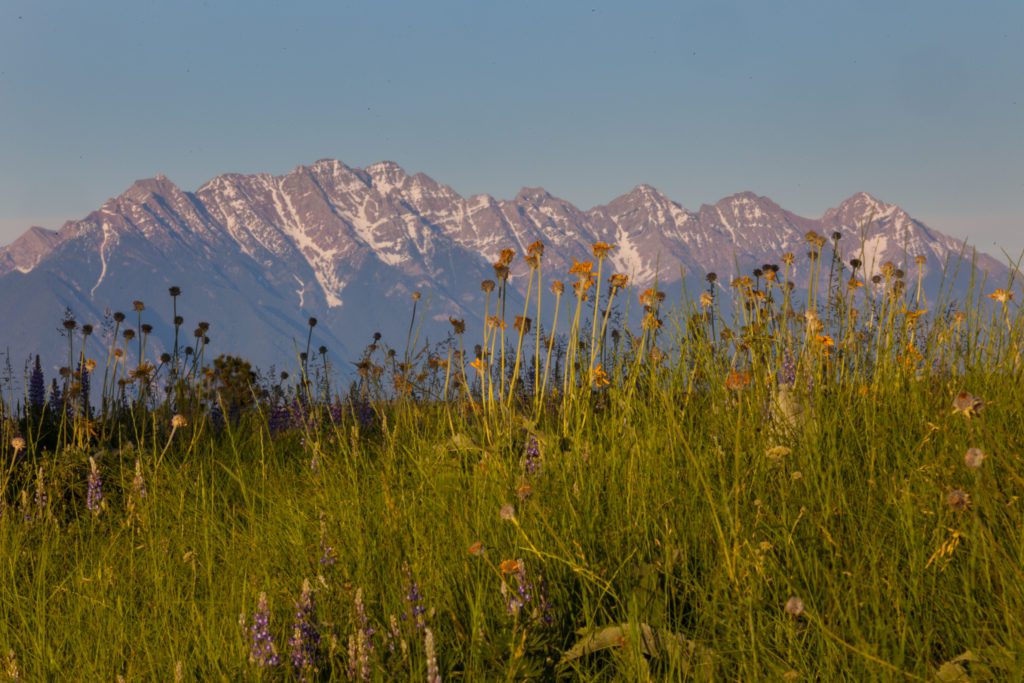
In the grasses surrounding you are wildlife, some endangered but finding a safe home in the conserved habitats of Wycliffe Wildlife Corridor. On a wildflower alights a tiger swallowtail butterfly, yellow wings shinning in the sunlight.
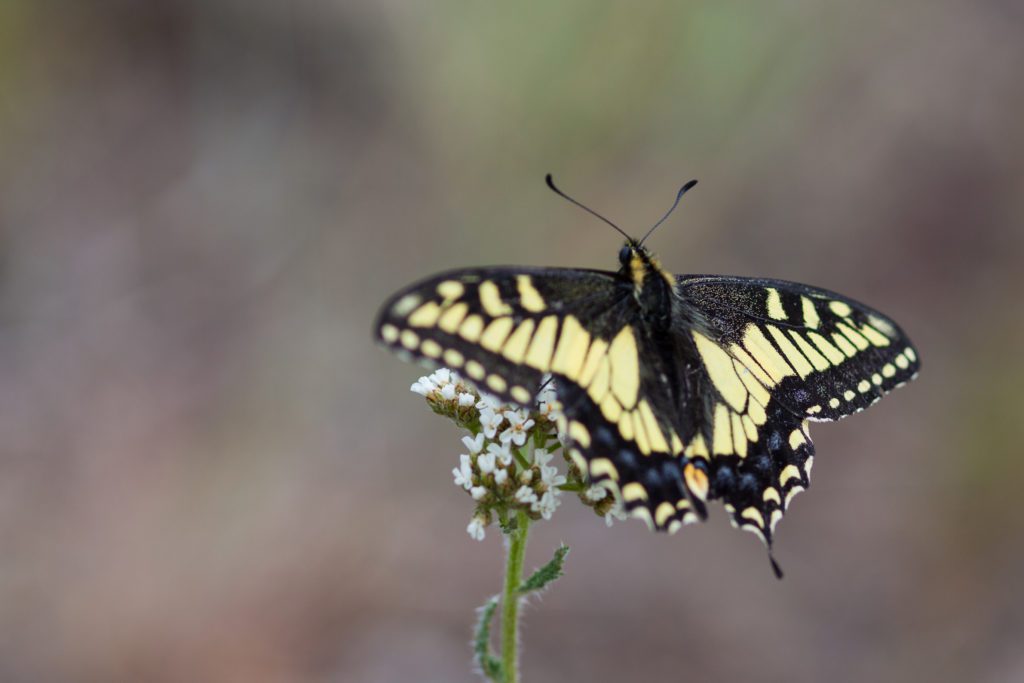
In the valley runs Luke Creek and St. Mary River, blue waters sparkling in the sun. Movement throughout these wetlands hints at the turtles and amphibians making their homes here. Douglas-firs, Western larches and aspen line the banks and fill the forest beyond. Shrubs of Saskatoon bushes and wild roses crowd the forest floor, songbirds flitting about them.
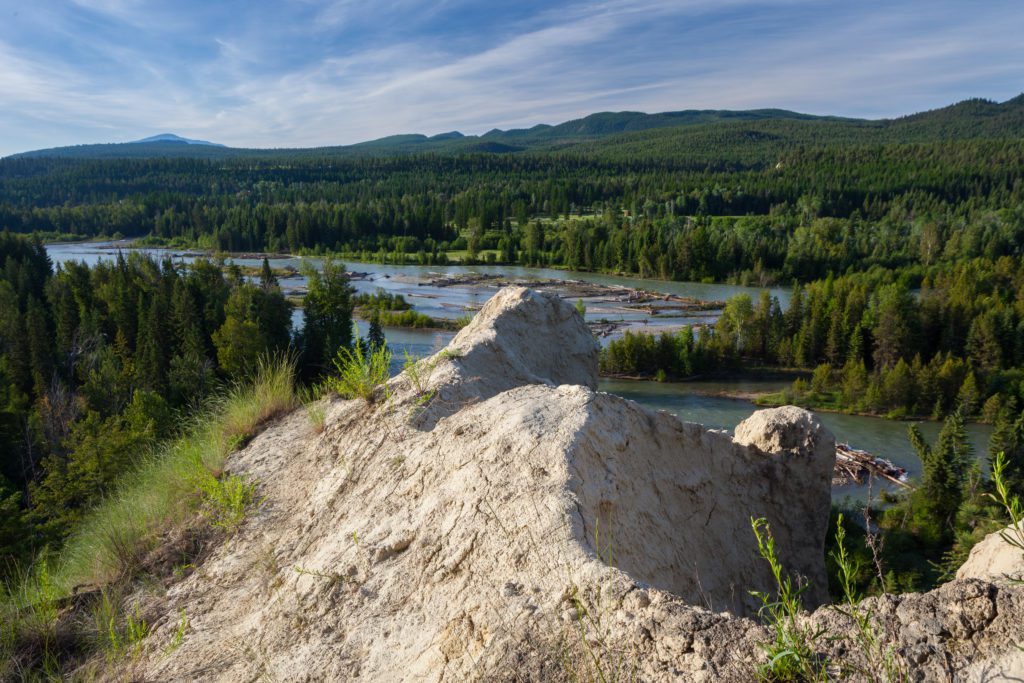
Rocky formations rise from the valley walls, outcrops and hoodoos with unique plants and wildlife like small purple bitterroot flowers and golden yellow wildflowers.
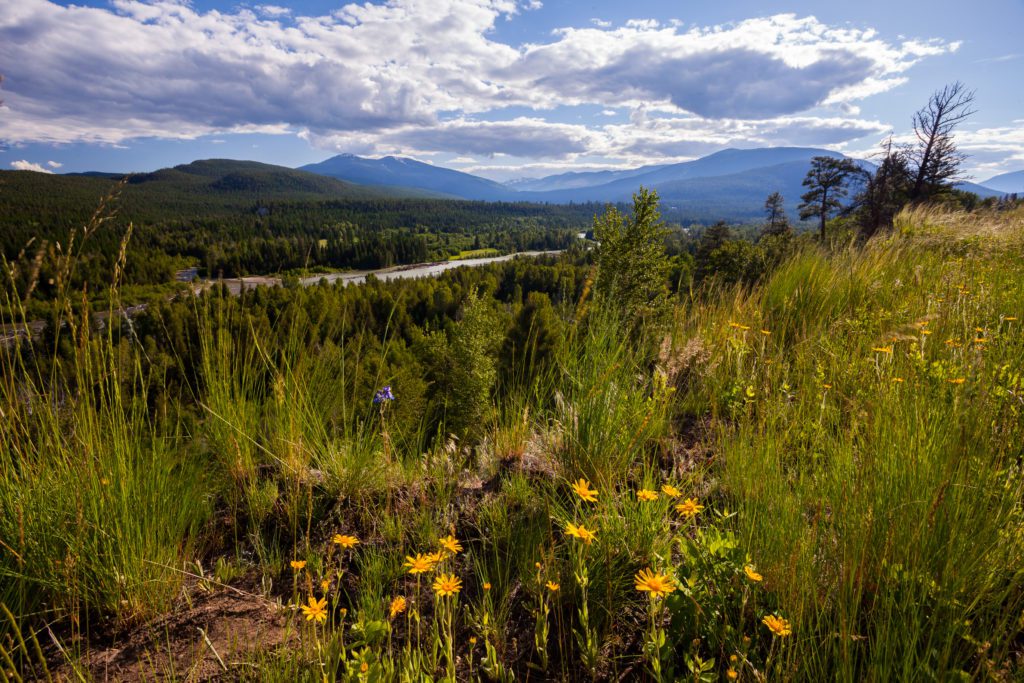
As the sun sets over the beautiful terrain of Wycliffe Wildlife Corridor, colouring the sky as purple as the lupine flowers before you, a sense of happiness fills your being that this land has been conserved since 2003.
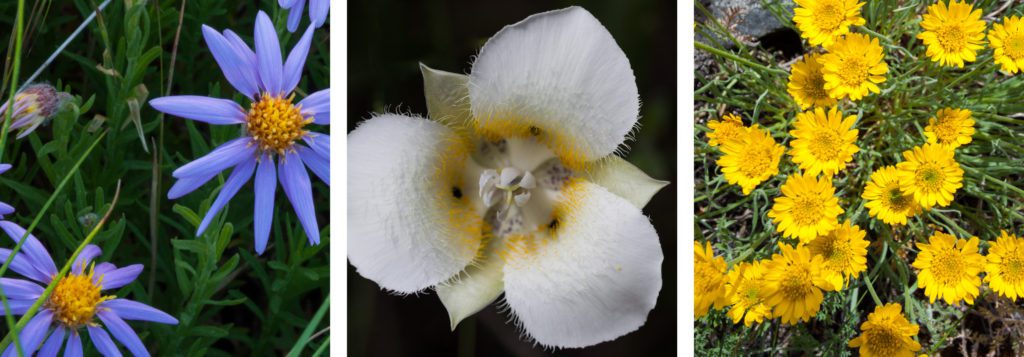
“Located between the communities of Kimberley and Cranbrook, the Wycliffe Wildlife Corridor is set amongst a spectacular backdrop of the Rocky Mountains to the east and the Purcell Mountains to the west. The property complex conserves diverse habitats ranging from grasslands to dry, open forests to riparian floodplain along the St. Mary River.”
- Chris Bosman, Kootenay Conservation Land Manager
Facts
- Between 2003 and 2016, the Nature Trust of BC acquired 364 hectares of conservation land as part of the Wycliffe Wildlife Corridor to protects dry interior grasslands, some of the most ecologically significant grasslands in the southern Rocky Mountain Trench, along with open forest ecosystems.
- A variety of habitat types exist on the property, including: open rough fescue/Ponderosa pine grasslands combined with denser Douglas-fir/Western larch stands; dense stands of Aspen poplar and important Saskatoon/wild rose shrub communities; open grasslands with wildlife trees, hoodoo formations and rocky outcrops; and wetlands and riparian areas along Luke Creek and St. Mary River.
- The grasslands shelter many threatened or endangered plant and wildlife species and rare plant communities, while cottonwood and aspen stands and wetlands on the property provide key habitat for songbirds, turtles and amphibians. During the winter, the property is home to deer and elk, as the open grasslands provide critical food and shelter
